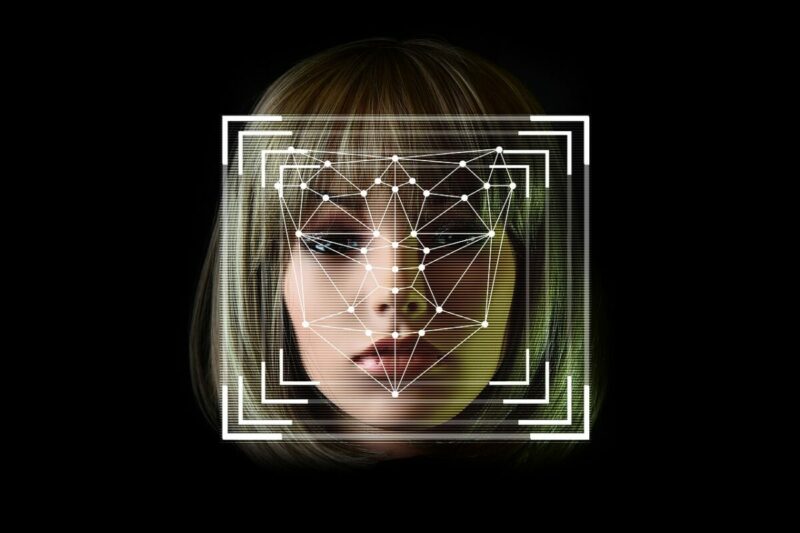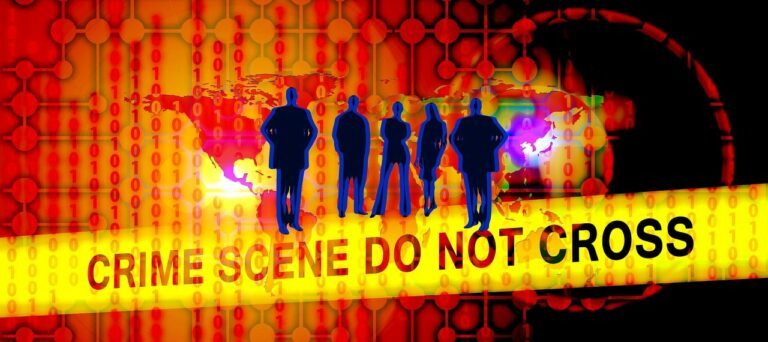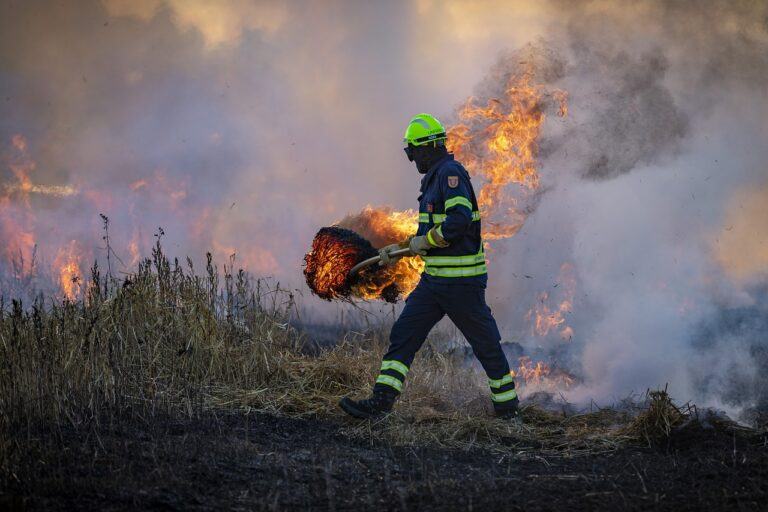What is Facial Recognition Software and How is it Revolutionizing Investigations
What is Facial recognition software? It is a technology that can recognize people’s faces. In this article, we’ll talk about how it’s used in crime scene investigations and what the benefits and challenges are.
You see, facial recognition is like a digital detective. It looks at a face, just like a detective looks at a photo, and it tries to figure out who that person is. It does this by analyzing the unique features of a face, like the distance between the eyes or the shape of the nose.
This technology is becoming more and more important in solving crimes. When you watch a crime show, you might have seen detectives using computers to identify suspects by scanning through lots of pictures. That’s facial recognition at work.
So, in this article, we’ll explore how this technology works, its use in solving crimes, and the good and not-so-good sides of it. We’ll also look at the devices that use facial recognition and what it’s used for in different places. Let’s dive into this digital detective world!
What is Facial Recognition Software
Facial recognition software is like a digital detective that can identify people by analyzing their faces. Let’s break it down into simple terms, starting with what it is and how it works, and then explore its role in crime scene investigations.
Definition and Explanation of Facial Recognition
Facial recognition is a technology that helps computers recognize human faces, just like you recognize a friend’s face in a crowd. It’s a way for machines to see and understand faces, and it’s pretty amazing how it does that. Imagine it as the technology version of your brain’s ability to recognize faces.
This technology is used in many places, not just for solving crimes. But when it comes to crime scene investigations, it becomes a powerful tool to help catch bad guys and bring justice.
Key Components and Processes Involved in Facial Recognition Software
Facial recognition isn’t as simple as looking at a face and saying, “Hey, that’s Bob!” It goes through a few important steps:
- Image Acquisition and Preprocessing: First, a camera or sensor captures an image of a face. This image may need some cleaning up to make it easier for the software to work with.
- Feature Extraction: The software looks at specific things on a face, like the distance between the eyes, the shape of the nose, or the size of the mouth. These unique features help the software tell one face from another.
- Matching and Classification: Finally, the software compares the features it found to a database of faces. It tries to find a match, like a puzzle piece fitting perfectly. If it finds a match, it says, “I know this face!”
What is Facial Recognition Software: Applications in Various Fields
Now, let’s see where facial recognition technology shows up:
- Crime Scene Investigations: In the world of solving crimes, facial recognition helps law enforcement identify suspects or missing persons by scanning through lots of pictures. It’s like a high-tech way to match faces and solve mysteries.
- Security and Access Control: In places like airports or high-security buildings, facial recognition helps control who can enter. It makes sure that only the right people get access.
- Personal Identification and Authentication: Some phones and computers use facial recognition to let you in, so it’s not just for catching criminals. It can also protect your stuff.
- Social Media and Marketing: Have you ever seen Facebook suggest who’s in a photo you uploaded? That’s facial recognition helping you tag your friends.
The Role of Facial Recognition Software Algorithms
Now, here’s where it gets a bit more technical. Facial recognition software relies on special algorithms. These algorithms are like recipes for computers, telling them how to recognize faces. They follow a set of rules and instructions to find the right features and make matches.
In the next sections, we’ll explore how this facial recognition software is used in crime scene investigations, its benefits, and the challenges it brings to the table. Get ready to dive into the world of digital detectives!
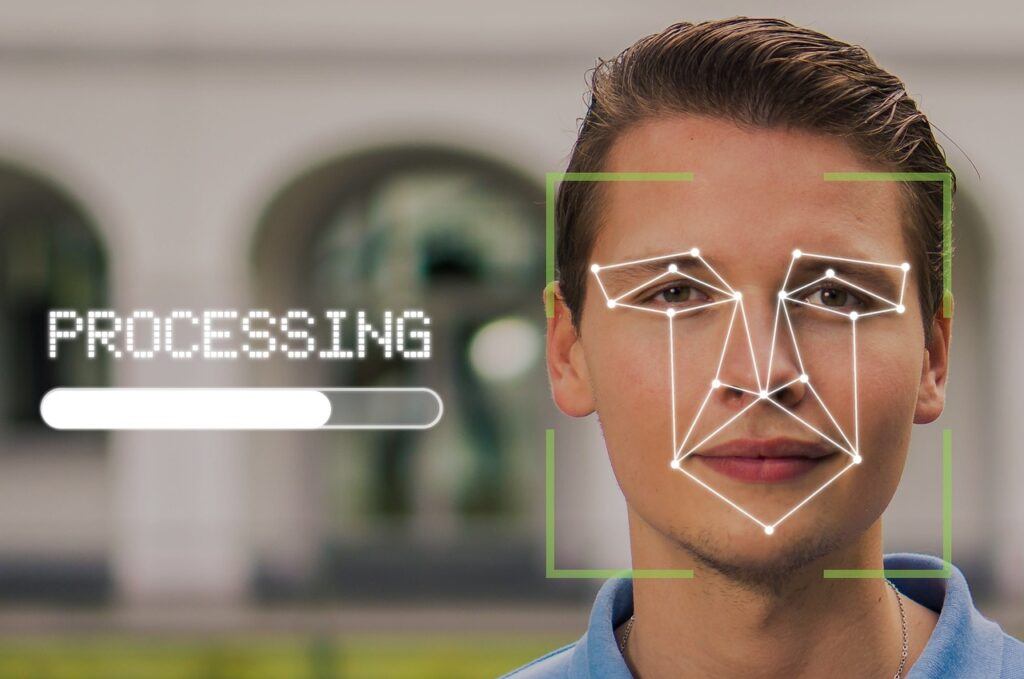
What is Facial Recognition Software: Benefits in Crime Scene Investigations
Facial recognition software plays a pivotal role in crime scene investigations, offering a range of advantages to law enforcement and investigators. In this section, we’ll dig into these benefits, demonstrating how this innovative tool aids in solving crimes and ensuring public safety.
Enhancing Suspect Identification
- Faster and More Accurate Suspect Identification: Traditional methods of identifying suspects can be time-consuming and sometimes inconclusive. Facial recognition software significantly speeds up this process, increasing the chances of identifying suspects accurately.
- Reducing False Arrests: By providing law enforcement with a powerful tool for narrowing down potential suspects, facial recognition can help reduce the likelihood of arresting innocent individuals. This not only safeguards the rights of citizens but also ensures that resources are focused on legitimate leads.
Solving Cold Cases
- The Role of Facial Recognition in Unsolved Cases: Cold cases, which are crime scene investigations that have gone unsolved for an extended period, often pose significant challenges for investigators. Facial recognition software can breathe new life into these cases by matching images and connecting the dots that might have been missed in the past.
- Real-Life Success Stories: Numerous real-life success stories demonstrate the effectiveness of facial recognition in solving cold cases. We’ll explore specific cases that have been cracked thanks to this technology.
Improved Investigative Efficiency
- Analyzing Large Databases of Faces: In the digital age, databases of faces are constantly growing. Facial recognition software is well-suited for quickly searching and comparing vast sets of images, streamlining the investigative process.
- Reducing the Workload on Investigators: Instead of manually sifting through countless photos and surveillance footage, investigators can rely on facial recognition to narrow down potential leads. This not only saves time but also allows investigators to focus on other critical aspects of their work.
Facial Recognition Use: Cases for Police
- Crime Prevention: Facial recognition can be used for predictive policing, helping police identify potential trouble spots based on past patterns and known criminals’ data. This proactive approach can deter criminal activity in high-risk areas.
- Forensic Evidence: Facial recognition can be a powerful tool in analyzing forensic evidence. It can help identify victims or uncover details about a crime scene by matching faces to databases.
The benefits of facial recognition in crime scene investigations are evident in its capacity to enhance suspect identification, solve previously unsolved cases, and improve the overall efficiency of investigative processes. In the following sections, we will explore the challenges and concerns associated with this technology, as well as its applications in various law enforcement and public safety scenarios.
What is Facial Recognition Software: Challenges and Concerns
While facial recognition software offers substantial benefits in crime scene investigations and law enforcement, it also comes with significant challenges and concerns.
Privacy Concerns
- Invasion of Privacy Issues: Facial recognition can be seen as intrusive because it often involves scanning and analyzing people’s faces without their consent. This has raised concerns about personal privacy and civil liberties, especially in public spaces.
- Ethical Considerations: The use of facial recognition in law enforcement poses ethical questions about the balance between public safety and individual privacy. Striking the right balance is essential.
Accuracy and Bias
- Discussing Instances of Misidentification: Facial recognition is not infallible and can sometimes make mistakes. Misidentifications can lead to innocent people being wrongly implicated in crimes, which can have serious consequences.
- The Issue of Bias in Facial Recognition: Algorithms used in facial recognition systems may not perform equally well for all demographics. There is a risk of bias, particularly when it comes to recognizing individuals from different racial or ethnic backgrounds.
Legal and Regulatory Challenges
- Laws and Regulations Surrounding Facial Recognition: The legal framework governing the use of facial recognition is still evolving. Different regions and countries have varying regulations, and there is ongoing debate about how to effectively regulate the technology.
- Ongoing Debates and Discussions: Debates about the appropriate use of facial recognition, data storage, and retention periods continue, with stakeholders trying to strike the right balance between public safety and individual rights.
Navigating these challenges is crucial for the responsible and ethical use of facial recognition in crime scene investigations and law enforcement. In the subsequent sections, we will explore best practices and guidelines to address these concerns and provide examples of real-world applications of facial recognition in the field.
What is Facial Recognition Software: Best Practices and Guidelines for Responsible Use
Facial recognition is a powerful tool, but it must be used responsibly to address the concerns and challenges associated with its implementation in crime scene investigations and law enforcement.
The Importance of Responsible Use
- Balancing Public Safety and Privacy: One of the primary challenges in using facial recognition is achieving a balance between public safety and individual privacy. Responsible use involves finding the middle ground where both interests are respected.
- Transparency and Accountability: Law enforcement agencies and organizations that use facial recognition should be transparent about their practices and be held accountable for their actions. Clear policies and procedures are essential.
Guidelines for Ethical Facial Recognition Use
- Consent and Data Collection: Individuals’ consent should be sought whenever possible, especially in non-public spaces. Limit data collection to the necessary minimum and securely store any collected data.
- Data Security: Protecting the data collected is of utmost importance. Robust security measures should be in place to safeguard against breaches or misuse.
- Regular Audits and Testing: Law enforcement agencies should regularly audit and test facial recognition systems to ensure their accuracy and fairness. This can help identify and address bias and errors.
- Accountability for Misuse: Establish clear consequences for any misuse of facial recognition technology, whether intentional or unintentional. Violations of guidelines should have appropriate penalties.
Education and Training
- Proper Training: Law enforcement personnel should receive thorough training on the use of facial recognition software, its limitations, and ethical considerations.
- Awareness of Biases: Training should include awareness of the potential biases in facial recognition algorithms and the need to avoid undue influence from these biases.
- Continuous Learning: Law enforcement agencies should remain open to learning from experiences and adapt their practices as the technology evolves and improves.
Implementing these best practices and guidelines can help ensure that facial recognition software is used responsibly and ethically in crime scene investigations and law enforcement. In the following sections, we will explore real-world examples of how facial recognition has been applied to solving crimes and enhancing public safety.
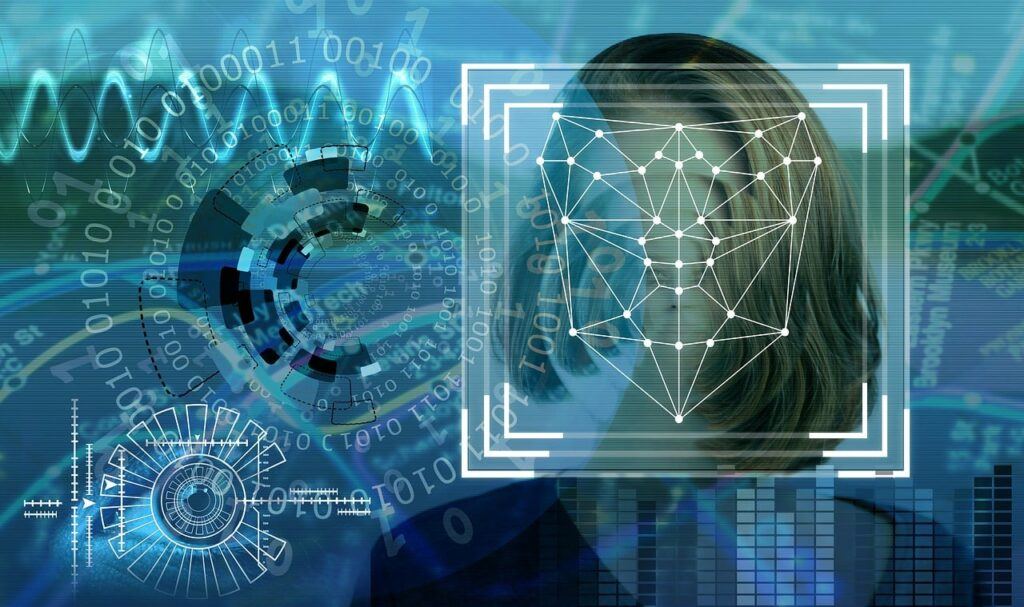
What is Facial Recognition Software: Real-world Examples
The impact of facial recognition software on crime scene investigations and law enforcement becomes clear when we examine real-world cases where this digital detective has played a crucial role. Here are a few notable examples:
- Boston Marathon Bombing Investigation: In the aftermath of the 2013 Boston Marathon bombing, investigators used facial recognition software to identify and locate the suspects. Surveillance footage provided images of the suspects, which were matched against existing databases, ultimately leading to their capture.
- Missing Persons Cases: Facial recognition has been instrumental in reuniting missing persons with their families. When individuals go missing, law enforcement can use facial recognition to compare photographs of found individuals with databases of missing persons, potentially leading to reunions.
- Cold Case Solving: Long-standing unsolved cases have been cracked open with the help of facial recognition. By reanalyzing old evidence and utilizing the latest facial recognition software, investigators have been able to identify perpetrators and bring closure to victims’ families.
- Public Safety and Event Security: Facial recognition has been used to enhance security at major public events. It can identify individuals who pose a security risk and help prevent incidents or respond more effectively to threats.
These real-world examples highlight the practical applications and successes of facial recognition in crime scene investigations and law enforcement. The technology’s ability to swiftly identify suspects, solve cold cases, locate missing persons, and bolster public safety underscores its significance as a valuable tool.
In the following section, we will explore the future trends and developments of facial recognition software, including its evolving role in law enforcement and the changing landscape of privacy and security.
What is Facial Recognition Software: Future Trends and Developments
As technology continues to evolve, so does the field of facial recognition. In this section, we’ll look at the exciting future trends and developments of facial recognition technology, focusing on its role in law enforcement and the changing landscape of privacy and security.
Advancements in Facial Recognition Software
- Improved Accuracy: Facial recognition algorithms are constantly improving. Future developments will likely bring even greater accuracy, reducing the risk of misidentifications.
- Real-Time Analysis: Law enforcement may have access to real-time facial recognition, allowing officers to identify individuals on the spot. This could be a game-changer for crime prevention and rapid response.
- Biometric Integration: Facial recognition may become part of a broader biometric authentication system, combining it with other technologies like fingerprint scanning or iris recognition for enhanced security.
Increased Integration in Law Enforcement
- Wider Adoption: Facial recognition is likely to become more deeply integrated into law enforcement practices, becoming a standard tool in crime investigations.
- Predictive Policing: Law enforcement agencies may use facial recognition for predictive policing, helping identify potential crime hotspots and patterns more effectively.
Evolving Landscape of Privacy and Security
- Regulatory Changes: Governments and regulatory bodies will continue to adapt to the challenges posed by facial recognition. New laws and regulations will shape its use and protect individual rights.
- Privacy-Centric Designs: The development of privacy-centric facial recognition systems will focus on safeguarding personal information and minimizing data collection and retention.
- Public Awareness and Debate: Privacy and security concerns will continue to fuel public debate. Increased awareness and scrutiny will drive responsible usage and the development of ethical standards.
In the near future, facial recognition software will play an even more significant role in law enforcement, and crime scene investigations, enhance public safety, and provide rapid responses to security threats. However, these advancements will also raise important questions about ethics, privacy, and regulation.
In the final section, we will summarize the key points of this article, emphasizing the importance of responsible and ethical use of facial recognition software in crime scene investigations and beyond.
What is facial recognition software used for?
Facial recognition software is used for various purposes, including but not limited to:
1. Identity verification: It can be used to authenticate individuals by comparing their facial features with stored data, such as passport photos or employee profiles.
2. Access control: Facial recognition can be used to grant or deny access to secured areas based on authorized personnel.
3. Surveillance and security: It is used by law enforcement agencies and security systems to identify individuals in real time or from recorded footage.
4. Personalization: Facial recognition can be used to personalize user experiences, such as unlocking smartphones or customizing digital content.
5. Marketing and advertising: It can be used to analyze demographics and track customer behavior, enabling targeted advertising campaigns.
6. Attendance tracking: Facial recognition can automate attendance systems by identifying individuals in a crowd.
7. Medical applications: It can aid in diagnosing certain genetic disorders or diseases by analyzing facial characteristics.
8. Emotion analysis: Facial recognition software can analyze facial expressions to detect emotions, which can be useful in market research or mental health applications.
9. Law enforcement: Facial recognition is used by police departments to assist in identifying suspects or missing persons.
Please note that the use of facial recognition software raises privacy and ethical concerns, and its implementation should adhere to legal and ethical guidelines.
Who uses facial recognition software?
Facial recognition software is used by various entities including law enforcement agencies, government organizations, airports, border control, security companies, retail businesses, social media platforms, and biometric identification systems.
What is facial recognition software called?
Facial recognition software is called “facial recognition software.
Is facial recognition software legal in the US?
Facial recognition software is legal in the US, but its use is subject to various laws and regulations at the federal, state, and local levels. It is important to comply with privacy laws, and data protection regulations, and obtain consent when necessary. It is recommended to consult with legal professionals to ensure compliance with relevant laws and regulations in your specific jurisdiction.
What is Facial Recognition Software: Conclusion
Facial recognition is poised to make significant contributions to public safety and criminal justice. Its capacity to swiftly identify suspects, solve cold cases, and bolster security at public events is undeniable. However, it also raises valid concerns about privacy, bias, and the need for clear regulation.
Responsible use of facial recognition in law enforcement requires a delicate balance between the benefits it offers and the potential risks it poses. As this technology continues to advance, the following principles and considerations are essential:
- Transparency and Accountability: Law enforcement agencies must be transparent about their facial recognition software practices and be accountable for their actions. Clear policies and procedures that prioritize privacy and fairness are vital.
- Privacy-Centric Design: Future developments should prioritize privacy-centric design, safeguarding personal information, and minimizing data collection and retention.
- Ethical Use: The responsible and ethical use of facial recognition software must be a guiding principle. The public and law enforcement should work together to define acceptable boundaries.
- Legislation and Regulation: Governments and regulatory bodies will play a significant role in shaping the future of facial recognition software. Laws and regulations should evolve to address emerging challenges while respecting civil liberties.
The journey ahead for face recognition technology in law enforcement is one that holds great promise. It has the potential to aid in crime scene investigations, enhance security, and provide valuable tools for crime prevention. However, this journey also requires vigilance, responsibility, and a commitment to respecting the rights and privacy of individuals.
After reading this article, I hope you have a good understanding of what is Facial Recognition Software, does facial recognition work, and how it assists law enforcement during crime scene investigations.
Thank you for reading and please leave comments below.
Additionally, to read about the most common mistakes Investigators make at crime scenes, click here, or to read about the role of crime scene evidence in human trafficking, click here.
Also, to read comprehensive product reviews of 2023, visit my other website.
Willie McCain
